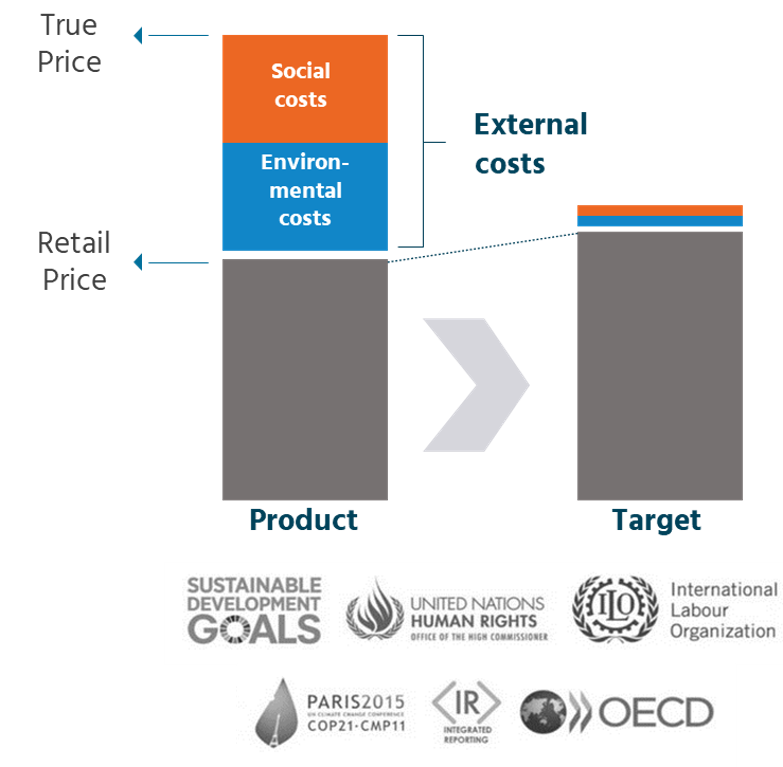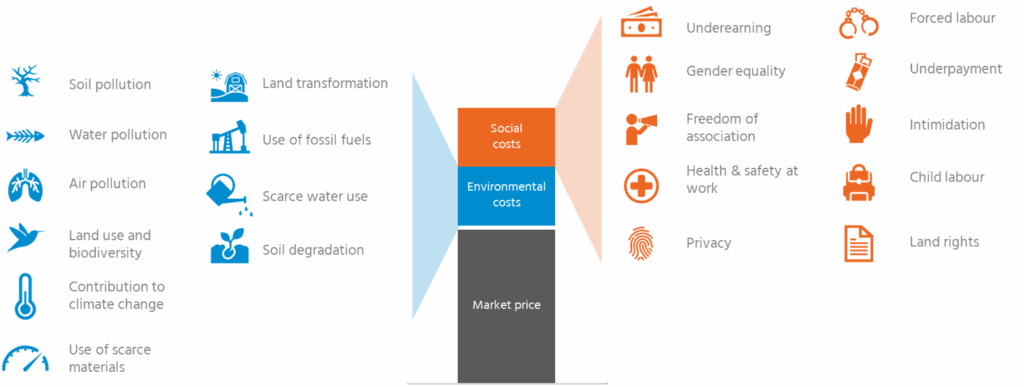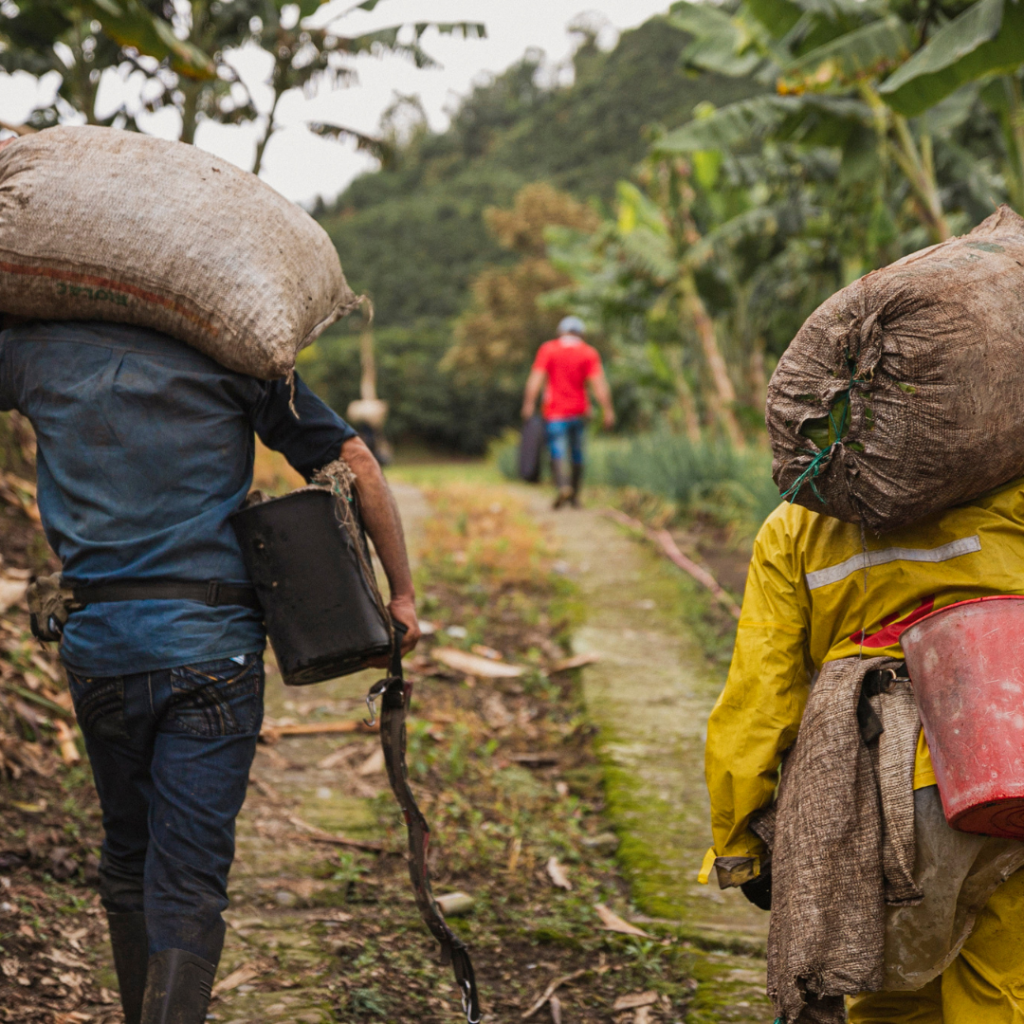Across the world, the call for more sustainable, fair, and resilient systems is growing louder. From climate change and biodiversity loss to inequality and food insecurity, the challenges we face are deeply interconnected and rooted in our system.
More and more, governments, businesses, scientists, and citizens are recognising the need to rethink how we value products and make decisions. True pricing is gaining momentum as a practical and systemic approach to help address these challenges by making the hidden social and environmental costs of products visible and actionable.


